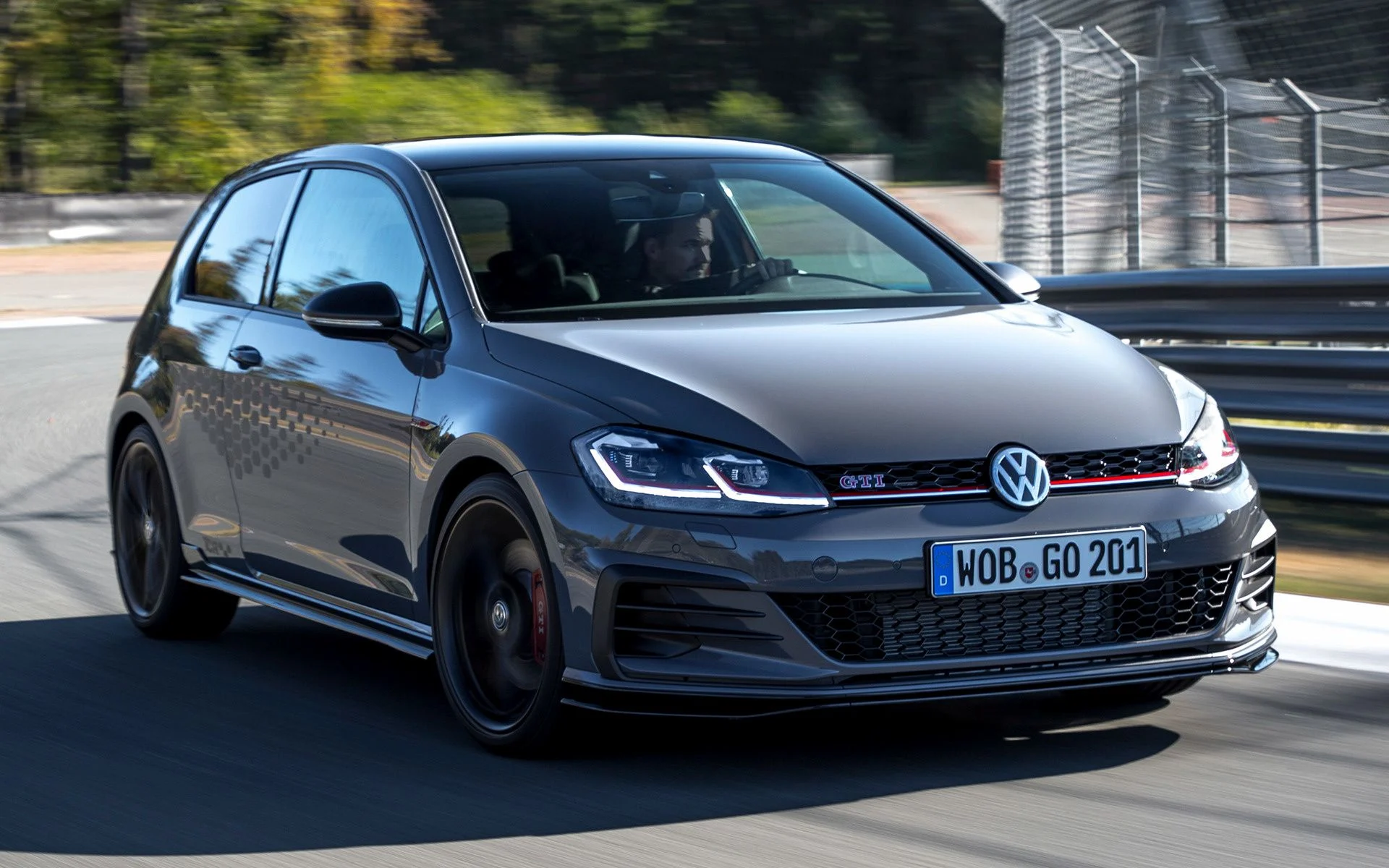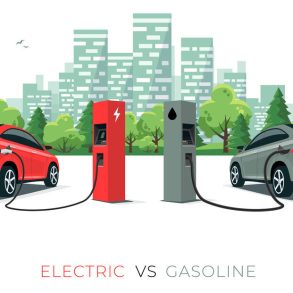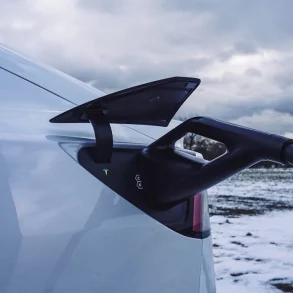2019 Europe Automotive Sales by Automaker – The Best-Selling Automotive Manufacturers By Sales Volume
Car sales in Europe were up 1.3% in 2019 to the highest annual volume since 2008, at 15.66 million sales. Sales were up in each of the last four quarters of the year, with an exceptional 22% gain in December. There are two reasons for this sudden surge in sales: first there is the depressed level at the end of 2018 due to the introduction of the new WLTP fuel economy and emissions standards by September 2018, and secondly manufacturers were rushing to register inefficient models in 2019 before the new average fleet emissions standards came into effect at January 2020. From this date, the average emission for each car sold in Europe by a manufacturer should be 95 g/km or lower, with potentially enormous fines if this standard is not met.
Therefore, manufacturers were rushing to register unsold inefficient vehicles before this date. In January 2020, we’ll see that manufacturers with a relatively inefficient fleet will see a significantly reduced sales volume while we’ll also see a jump in sales for electric and plug-in hybrid models for which deliveries have been postponed until the new year (the Mercedes-Benz EQC is one of the most significant examples of this). The only caveat in this last prediction is that there was an enormous spike in EV deliveries in The Netherlands in December due to a tax increase on this type of vehicle as a company car by January 2020, but that effect might be neglectable considering The Netherlands is just a small part of the European market, and that EV deliveries here were prioritized over other markets which has created a delivery backlog that needs to be filled in the first quarter of 2020.
Of the five major EU countries, Germany recorded the largest increase at +5%, followed by France at +1.9% and Italy at +0.3%. On the other hand, both Spain (-4.8%) and the UK (-2.4%) saw their car markets decline in 2019.
Sales of car models (hatchback, sedan, stationwagon, coupe and convertible) were down 3,4%, and their share is down to a record low of 54.7%, compared to last year’s 57.2% and over 79% in 2009. Indicating a potential further drop in share in 2020, December showed the lowest share of the year for car models at 52.5%. Meanwhile, crossover and SUV sales were up 10.3% and their share hit a new record of 38.2%, up from 35% in 2018 and just 8.5% in 2009. In December, the crossover and SUV share peaked at 41%.
MPV sales were down 9.1% to 7.1% of the European car market, also a new low. Within these figures, sales of EVs and PHEVs are up 64% in 2019 to 3.6% of the total market (2018: 2.2%), with EVs up 90% to 2.3% share (2018 (1.2%) and Plug-in Hybrids shifting into a higher gear at +31% to 1.3% share (2018: 1%). In December, the share of plug-in vehicles in Europe peaked at 6.1%, a sign of things to come in 2020.
Volkswagen Group managed to improve its share of the European car market by 0.8 percentage points to 24.5% with a record 3.83 million sales and is the fastest growing manufacturer in the top-8 while its nearest rivals PSA and Renault-Nissan both saw lower sales in 2019. BMW AG holds on to its 4th place but feels Hyundai-Kia breath down its neck, less than 7,000 sales behind. For both manufacturers this is a record annual volume, for the South-Korean automaker its 5th consecutive annual sales record in Europe, and its 6th consecutive year of growth. Meanwhile, BMW’s main rival Daimler AG is up 4.7% to also an annual sales record, leapfrogging both Ford Motor Company and FCA in 2019, two manufacturers which are a long way from their sales peak in Europe. Ford peaked in 2004 at 1.76 million sales but dipped below 1 million sales in 2019. It was also below that level from 2012 to 2014. Fiat has been in decline since the mid ’90s when the Italian company also sold over 1.6 million cars annually in Europe.
Toyota Motor shows the second biggest growth rate in the manufacturer top-10 at +5.5% just after Geely’s +5.8%. Just outside of the top-10, those growth figures are also beaten by Suzuki at +6% and Mazda at +7.9%. For the former, this is the 6th consecutive annual growth rate in Europe, but it will be difficult to maintain this figure. Suzuki’s models are starting to age, it has dropped the Celerio and Baleno from its line-up to return to a one-model-per-segment strategy, sales of the Jimny small SUV are being cut as a result of its high CO2 emissions and the upcoming rebadged Toyota RAV4 hybrid and Corolla station wagon hybrid are half-assed attempts at improving the manufacturer’s average fleet emissions and are unlikely to reach significant sales volumes considering Suzuki’s failure at selling larger vehicles and the history of brands that started to sell rebadged models from other brands (Lancia, Saab).
Tata Motors sales are down 5% but Honda is in even greater trouble at -9.5% which makes 2019 its third consecutive year of declines to a record low annual sales volume. At just 123,000 sales and 0.8% of the European car market, compared to 1.45 million sales and 8.5% of the US market for the Honda brand (1.6 million and 9.4% including Acura) and 1.55 million sales and 7.4% of the Chinese market for the Honda brand, and even the 722,000 sales and 13.9% for the Japanese market, it’s obvious that the European car market is just an afterthought for Honda and not one playing a big role in the development of new models specifically catered to European tastes. The latter is even more obvious for Subaru, which is nowadays completely dependent on the US market (70.9% of its global sales), has virtually no presence in China, South-East Asia, South America and is even a small player in its home market Japan (131,000 sales at 2.5% share). Its European sales dropped 12% in 2019 to a record low of just 32,300 sales, just 3.3% of its global production. This is below Daihatsu’s average of 37,700 sales in its last 10 years of sales in Europe before it was killed, or Lancia’s 58,000 sales with just a single model in a single country and it leaves you wondering how much longer will Subaru stay in business in Europe.
Especially when you consider its relatively high fuel economy due to the lack of small cars and its high ratio of 4WD vehicles, and that 19% of its European “sales” in 2019 were registered in December, just before the new fuel economy regulations kicked in. This shows that Subaru had an artificially high number of self-registrations in December to reduce its CO2-related fines in 2020 and thus its 2020 sales are likely to sink even lower than 2019, to an unsustainable level. Even in Switzerland, where over 50% of the vehicles sold in 2019 are 4WD so in theory an ideal country for Subaru, reflected by its share of 12.5% of the Japanese brand’s sales in Europe (the Swiss market is just 2% of the European market), Subaru has just a 1.3% market share at just over 4,000 sales, not enough to justify a sustained presence in this market. The same can be said of Mahindra & Mahindra with its SsangYong brand, down 8.3% to below 15,000 sales.
Meanwhile, Tesla Motors has surpassed the 100,000 annual sales mark by almost quadrupling its sales volume in Europe thanks to the Model 3. Its largest market in terms of volume was The Netherlands in 2019, surpassing Norway for the very first time, and the Californian brand was a top-3 player in both of these markets. Its sales in other European markets showed significant growth as well, but it still has enough growth potential is the demand for EVs in those countries starts to gain traction as well. SAIC Motor has expanded its presence beyond the UK market and has now started sales in continental Europe as well, staring with the all-electric MG ZS EV.
This has resulted in a 55.4% increase in sales to a record 14,000 sales, a figure that undoubtedly will be trumped in 2020 as the Chinese company expands its line-up and its market presence. After the sale of Opel/Vauxhall, General Motors has attempted to keep a presence in Europe with Cadilac and a selection of Chevrolet models of which the Camaro is the most important, but with a 14% dip in sales to below 3,000 annual sales, it’s hard to see a future for the Americans on this side of the Atlantic. And while Aston Martin’s global sales were in the red in 2019, Europe was a ray of light at +12.7% to the brand’s highest annual volume since 2008, and that’s even before the DBX SUV has been launched.
2019 Best Selling Automakers in Europe
This data table looks at last month’s total automotive brand volumes in Canada by model. We compare Canadian automotive brand sales with last year. While we call it “year to date” sales, because the year is over, it is for the full sales year. With these sales numbers we also calculate a growth rate column so you can better gauge an individual automotive brands sales success in the Canadian market.
2019 Automaker Market Share Dynamics in Europe
This data table looks at total automotive sales and specific brand volumes in Canada. We compare Canadian automotive brand sales with last year. While we call it “year to date” sales, because the year is over, it is for the full sales year. With these sales numbers we also calculate a growth rate column so you can better gauge an individual automotive brands sales success in the Canadian market.
2019 vs 2018 Automaker Sales Comparison for Europe
This chart simply takes each brand and compares their year to date sales with the year to date sales for the same time last year. Brands where the current bar is lower than the prior year bar have seen declines in sales year on year whereas brands with a larger current bar and lower prior bar are seeing growth in volumes year on year.
2019 Automaker Sales Growth Analysis for Europe
This chart might seem a little complicated at first but once you understand it is very helpful. First, the size of the area for each brand refers to their market share (i.e size). The bigger the circle the larger the brand in terms of sales volumes (YTD). The position of the circle in the chart along the left axis looks at the year to date growth of that brand. The higher the brand is on the chart, the more year to date growth it is seeing in sales volumes. Along the bottom axis you can see the total volumes shipped by that brand year to date.
European car sales statistics are from the following countries: Austria, Belgium, Bulgaria, Croatia, Cyprus, Czech Republic, Denmark, Estonia, Finland, France, Germany, Greece, Hungary, Iceland, Ireland, Italy, Latvia, Lithuania, Luxembourg, Netherlands, Norway, Poland, Portugal, Romania, Slovakia, Slovenia, Spain, Sweden, Switzerland, United Kingdom. They exclude vehicles registered as commercial vehicles.
Source: ANDC, JATO Dynamics









